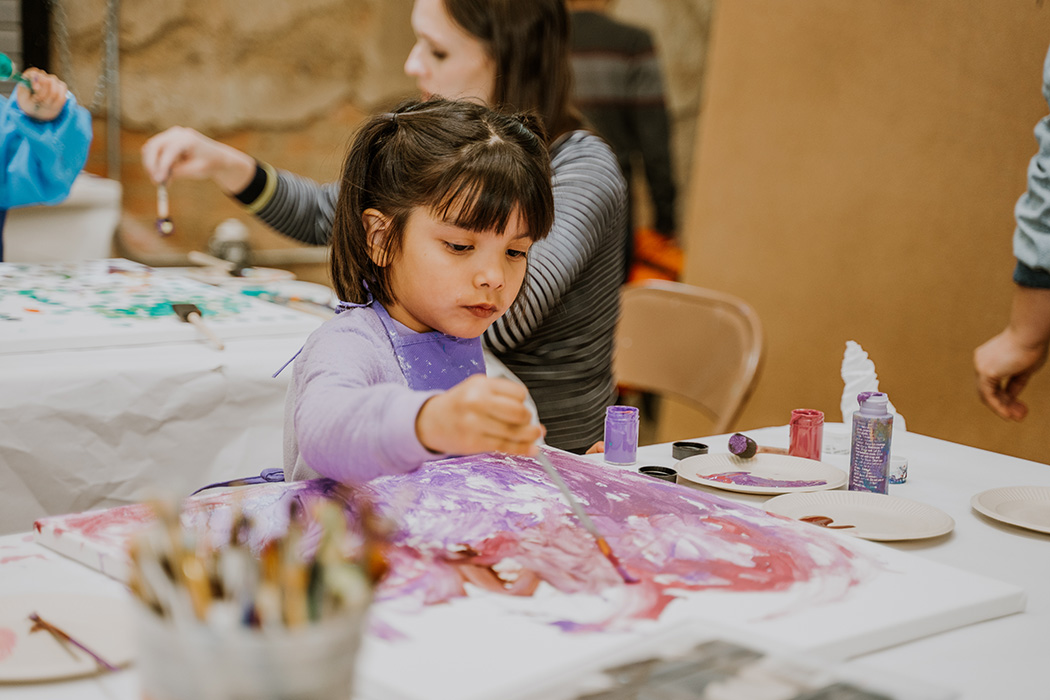The rundown storefront on Clarendon and South Oak Cliff Boulevard may have been an unlikely spot to create an artistic haven for neighborhood students.
But Kristen Jackson has a knack for turning rough canvases into beautiful creations.
The Westwood resident taught visual art for 10 years at Dallas ISD’s K.B. Polk Elementary near Love Field. Many of the students she worked with hadn’t picked up a crayon until they entered her kindergarten class. Most of the fourth-graders she took to the Dallas Museum of Art for an annual field trip were absorbing the famous works for the first time, despite the fact that they lived less than five miles away.
“These are things we don’t understand as part of the middle class,” Jackson says.
She could see her students’ curiosity and innate talent; they just needed the time and space to create.
For the first few years at Polk, she watched students line up for recess beside a long, short wall outside the cafeteria where a mural had been painted. Their little fingers picked at the paint while they waited, flecking it off.
Jackson asked her principal for permission to install a new, less corrodible public art project: Each student glazed their self-portrait onto a single ceramic tile, and Jackson fired them and installed them in rows covering the wall.
It was “an electrifying experience” for the students, she says. “Kids would come back years later and find their tile. I started thinking, ‘It would be so cool to do projects like this other places.’ ”
In 2009 she founded the nonprofit Color Me Empowered and launched summer programming that created public art in partnership with community centers. They began asking her to consider teaching weekly classes since art was a high and unmet demand in many communities. The City of Dallas’ Office of Cultural Affairs wanted Jackson to focus attention in the southern sector, and around the same time, her family moved to Oak Cliff.
She left Polk in 2014 to focus full-time on Color Me Empowered, and started by teaching after school in a leased church classroom space. They also offered a weeklong summer camp, which is now seven weeks. Then one of the nonprofit’s donors offered to purchase commercial space.
“Strategically, we wanted to be within walking distance of an elementary, middle and high school,” Jackson says.
Their new home on Clarendon sits a mile or less from Sunset High School, Greiner Middle School, and Winnetka and Lida Hooe elementary schools.
After school, inside the studio, students find clay, Legos and craft supplies runing the gamut.
“If we have it in our studio, they can use it,” Jackson says. “We give them time and space to come and create whatever they want to create. That open freedom is so important to development.”
Jackson doesn’t just want students to learn how to make beautiful art; she wants them to learn to take chances. Trial and error provide the foundation for kids to continue to pursue art, she says.
“When they are not afraid to make a mistake or work through something, or even to create some bad art, I think you see them growing by leaps and bounds once they get to high school,” Jackson says.
Though Oak Cliff is an artistic hub, art programs for kids are much harder to find in our neighborhood than in north or northeast Dallas, Jackson says. Color Me Empowered is exploding with growth because “parents in the neighborhood really, really, really want these programs for their kids,” she says. They connect with art teachers in the area to identify students, and they offer tuition based on a sliding scale so that it’s affordable for all families.
“We don’t want their finances to be the reason they don’t come through the doors,” Jackson says.
Color Me Empowered still creates public art, usually seven to 10 projects a year. Most recently, the students crafted little ceramic hearts. “We try to plaster the community with them, as gifts for our neighbors,” Jackson says.
Those projects are important to her, but the canvases she values most are the faces she greets every afternoon in the studio.
“It’s a safe space. They can come and be whoever they are,” Jackson says. “We need to let the weird kids know they can be as weird as they want to be.”






